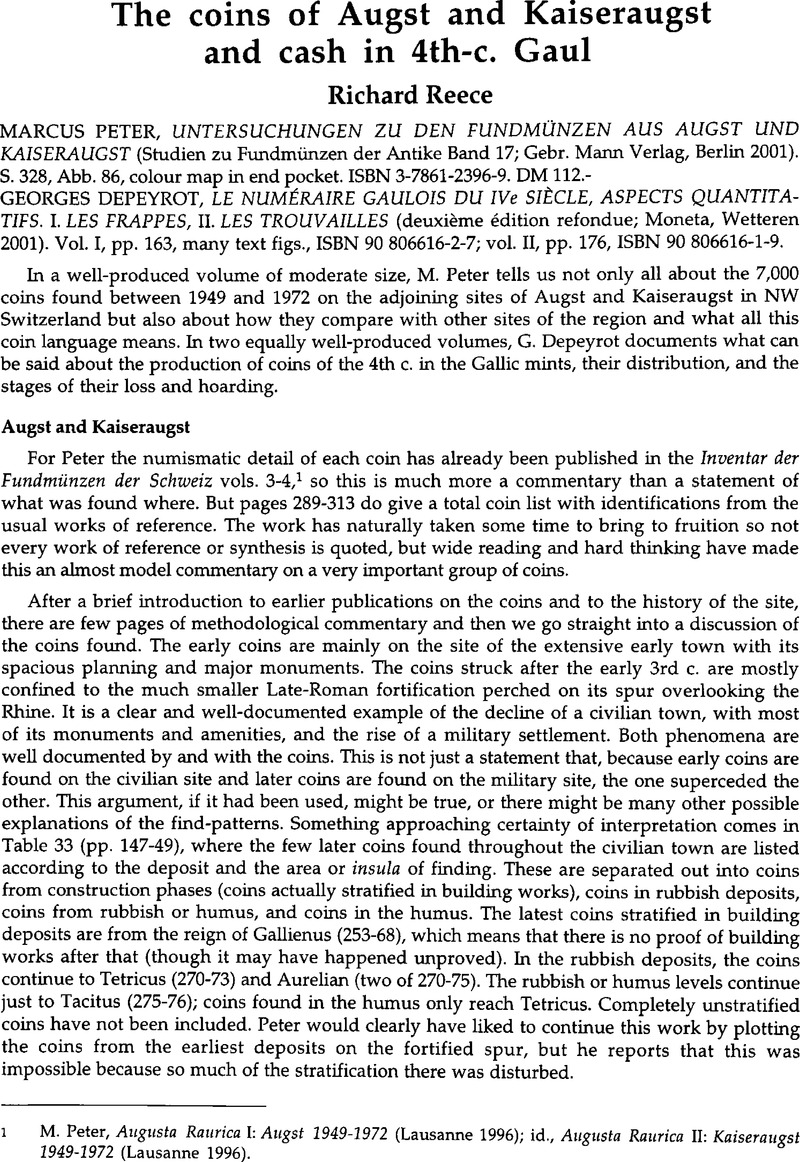No CrossRef data available.
Published online by Cambridge University Press: 16 February 2015

1 Peter, M., Augusta Raurica I: Augst 1949-1972 (Lausanne 1996)Google Scholar; id., Augusta Raurica II: Kaiseraugst 1949-1972 (Lausanne 1996).
2 Reece, R., “Roman coinage in Britain and the western empire,” Britannia 4 (1973) 227–52, at 236 CrossRefGoogle Scholar.
3 Depeyrot, G., Zilil 1 (CoUEFR 250, 1999)Google Scholar.
4 Small hoards, deposits, and grave-finds are kept separate from the rest of the coins, and they are dealt with separately.
5 A further level of detail beyond that at which either Peter or Hobley worked does exist, but it has not yet been explored. If a small portable, battery-driven scanner were available, a future Hobley could travel round Europe not just recording the RIC number of each coin but scanning it onto a CD. On return to base, he could then plot the distribution of the coins struck by a single pair of dies.
6 Hobley, A. S., An examination of Roman bronze coin distribution in the western empire A.D. 81-192 (BAR S688, Oxford 1998)Google Scholar.
7 Reece, R., “The regional study of coin finds,” JRA 7 (1994) 480–90Google Scholar.